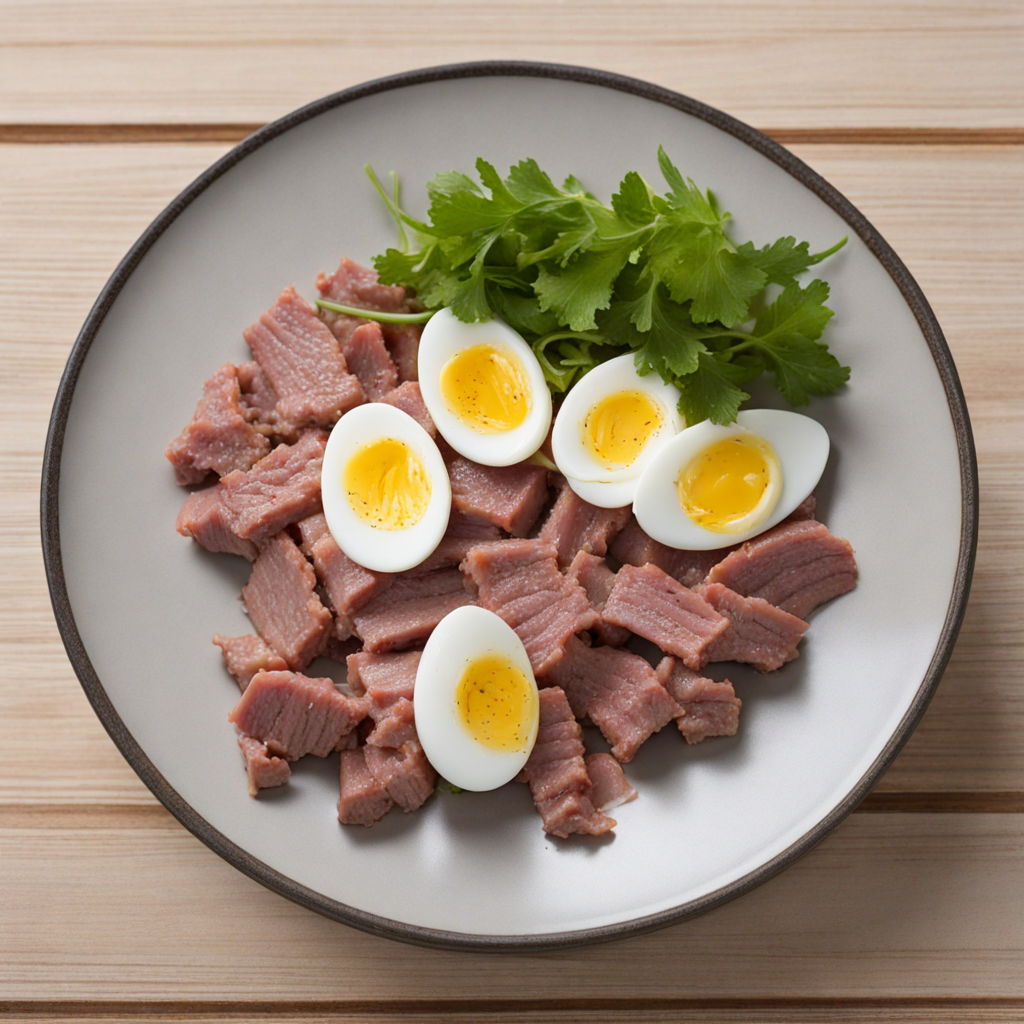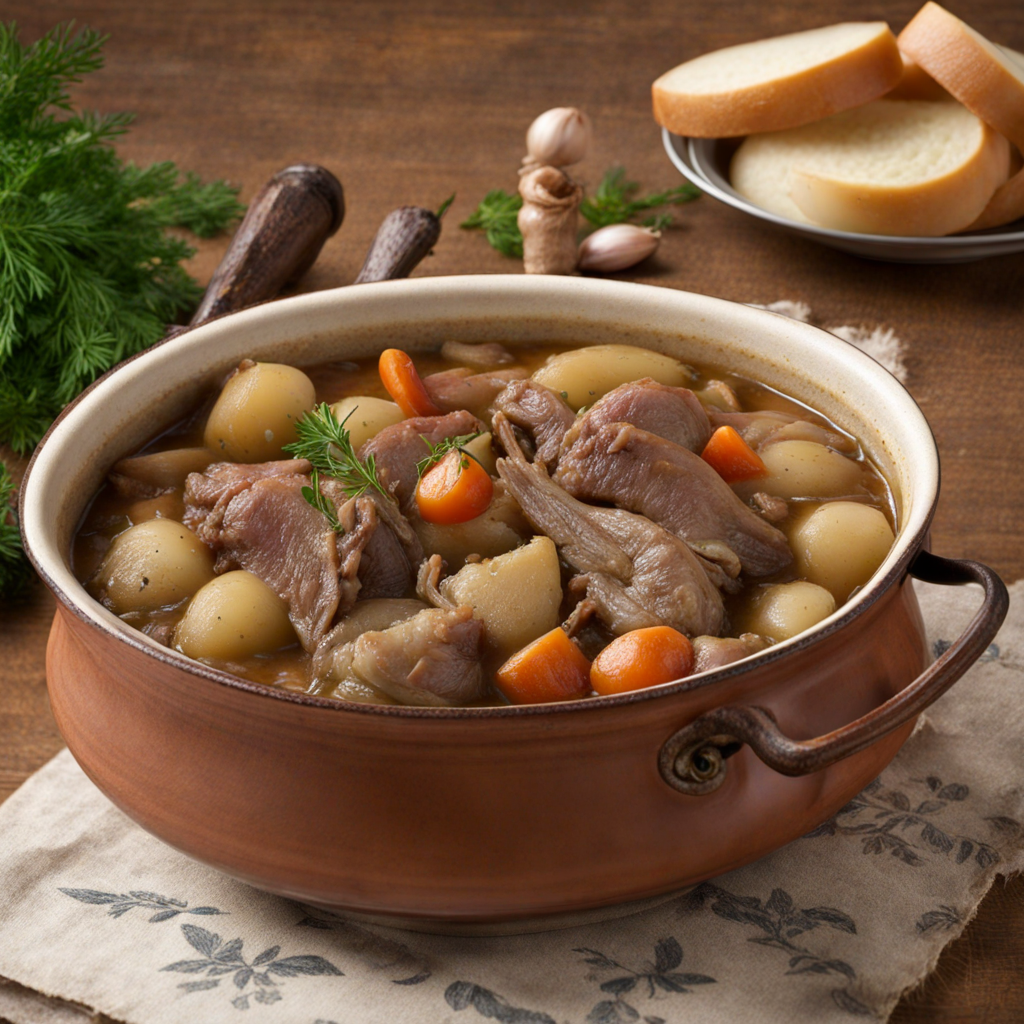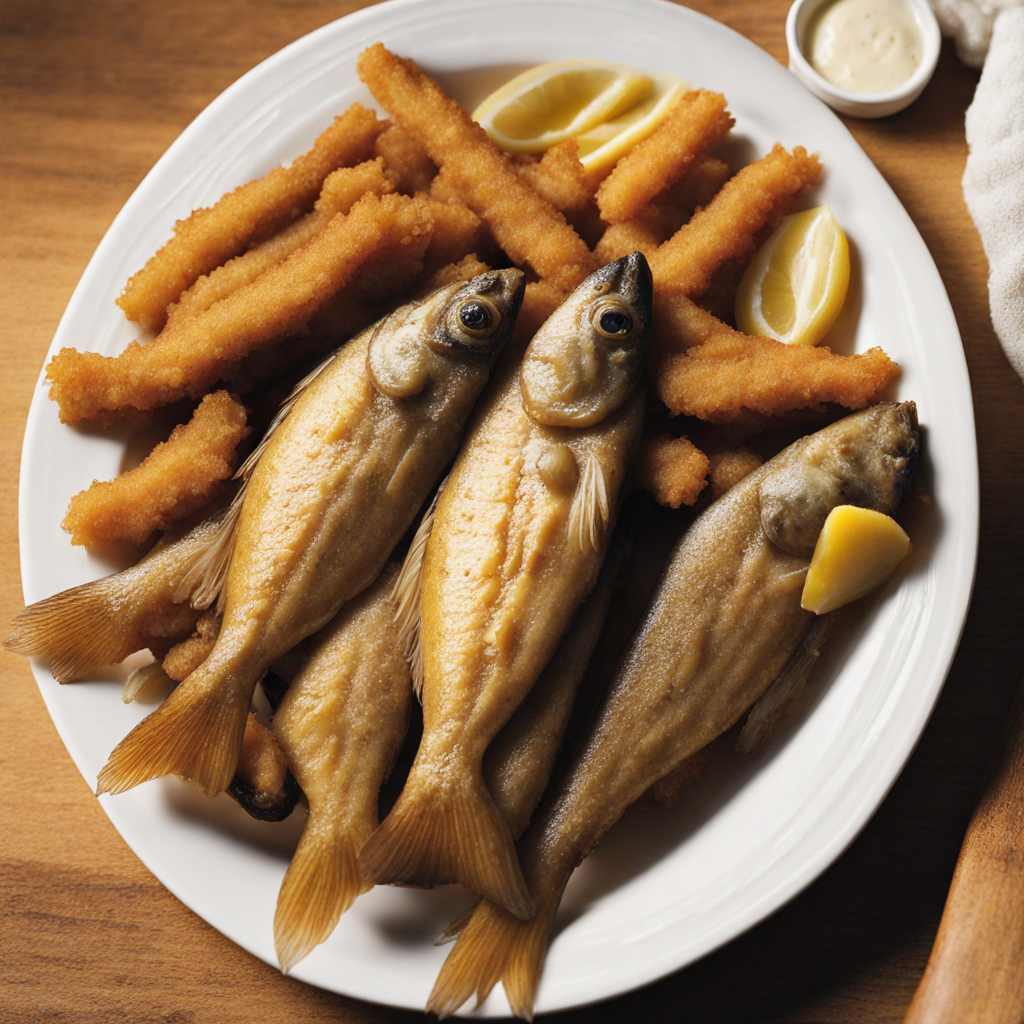Feierstengszalot
Feierstengszalot is a traditional Luxembourgish dish that captivates the palate with its unique combination of flavors and textures. At its core, the dish features tender beef, often marinated to enhance its rich taste, which is then cooked to perfection. The meat is typically served alongside a medley of fresh vegetables, such as carrots, onions, and sometimes potatoes, which are sautéed to bring out their natural sweetness. The vibrant colors and harmonious blending of ingredients make this dish not only a delight to eat but also a feast for the eyes. What sets Feierstengszalot apart is its signature dressing, which combines a tangy mustard base with a hint of vinegar, providing a refreshing contrast to the savory beef. This dressing is often enriched with fresh herbs, such as parsley or chives, which infuse the dish with aromatic notes that elevate each bite. The interplay of the dressing with the meat and vegetables creates a balance of flavors that is both comforting and invigorating, making it a perfect dish for a cozy family meal or a special occasion. Served chilled or at room temperature, Feierstengszalot is often accompanied by crusty bread or a light salad, making it an ideal dish for sharing among friends and family. The versatility of this salad allows it to be enjoyed in various settings, whether at a summer picnic or a winter gathering. With its delicious combination of ingredients and the charm of Luxembourgish cuisine, Feierstengszalot invites food lovers to explore a new culinary experience that is sure to become a favorite.
How It Became This Dish
The History of Feierstengszalot: Luxembourg's Beloved Celebration Salad Feierstengszalot, also known as "festival salad," is a cherished dish from Luxembourg that embodies the cultural heritage and culinary traditions of this small yet vibrant European nation. Known for its colorful ingredients and rich flavors, this salad is more than just a dish; it represents the communal spirit and festive nature of Luxembourgish celebrations. The history of Feierstengszalot is a reflection of the country’s agricultural practices, seasonal changes, and social customs, making it an integral part of Luxembourg's culinary narrative. #### Origins of Feierstengszalot The origins of Feierstengszalot can be traced back to the agricultural practices of the Luxembourgish people. Historically, Luxembourg was an agrarian society where families relied on local produce to create their meals. The salad typically consists of a mixture of fresh vegetables, notably potatoes, green beans, and a variety of herbs, all seasoned with a tangy vinaigrette. This use of fresh, seasonal ingredients is indicative of the broader European trend toward using locally sourced food, which has been a staple in Luxembourg's cuisine for centuries. The name "Feierstengszalot" translates to "festival salad," a term that signifies its connection to celebrations and communal gatherings. Traditionally, this dish would be prepared during local festivals, harvest celebrations, and family gatherings, where the bounty of the land would be showcased. As a reflection of the agrarian calendar, Feierstengszalot was often served during the late spring and summer months when vegetables were at their peak freshness. #### Cultural Significance Feierstengszalot plays a vital role in Luxembourgish culture, serving as more than just a dish but as a symbol of community and togetherness. In a country where family and social bonds are highly valued, food often becomes a medium for expressing love, hospitality, and tradition. The preparation and sharing of Feierstengszalot often accompany significant life events—weddings, birthdays, and national holidays. It is common to find this salad at gatherings, where its vibrant colors and fresh flavors bring people together, creating a sense of unity. During the National Day celebrations in Luxembourg on June 23, Feierstengszalot is frequently featured in picnics and barbecues, symbolizing the joy and pride of Luxembourgish identity. The salad's versatility allows it to be served as a side dish or a main course, making it a popular choice during festive occasions. This adaptability is essential in a country with diverse cultural influences, as Luxembourg has been shaped by its interactions with neighboring countries such as Belgium, France, and Germany. #### Development Over Time As Luxembourg's society has evolved, so too has the preparation and presentation of Feierstengszalot. In the early 20th century, the salad was primarily composed of simple ingredients that were readily available, reflecting the economic conditions of the time. After World War II, as Luxembourg began to modernize and urbanize, the culinary landscape started to change. The influx of new ingredients and international culinary influences led to the evolution of traditional dishes, including Feierstengszalot. In the late 20th century, the globalization of food culture brought about a renaissance in Luxembourg's culinary scene. Chefs began experimenting with the flavors and presentations of traditional dishes, leading to a contemporary interpretation of Feierstengszalot. While the core ingredients remained, new elements, such as exotic spices, gourmet oils, and even international fruits and vegetables, found their way into the salad. This evolution reflects a broader trend in European cuisine, where traditional dishes are reimagined to suit modern tastes while still honoring their roots. #### Modern-Day Feierstengszalot Today, Feierstengszalot continues to be a beloved dish in Luxembourg, celebrated for its freshness and adaptability. It can be found in both home kitchens and high-end restaurants, where chefs take pride in using locally sourced ingredients. The salad has become emblematic of Luxembourg's commitment to sustainability and farm-to-table dining, with many chefs emphasizing the importance of seasonal produce in their menus. In addition to its culinary significance, Feierstengszalot has become a symbol of national pride for Luxembourg. The dish is often featured in culinary festivals and events that celebrate Luxembourgish cuisine, attracting both locals and tourists alike. These events not only highlight the beauty of traditional dishes but also foster a sense of community among participants. Moreover, with the rise of the global food movement and an increasing emphasis on healthy eating, Feierstengszalot has gained popularity beyond Luxembourg's borders. Visitors to the country are often eager to experience authentic Luxembourgish cuisine, and Feierstengszalot is frequently highlighted as a must-try dish. The salad's reputation is further enhanced by its visual appeal—vibrant colors and fresh ingredients make it a feast for the eyes as well as the palate. #### Conclusion Feierstengszalot is more than just a salad; it is a culinary artifact that embodies the history, culture, and spirit of Luxembourg. From its humble origins rooted in agricultural traditions to its modern adaptations that reflect contemporary culinary trends, Feierstengszalot serves as a reminder of the importance of community, celebration, and the connection to the land. As Luxembourg continues to evolve, so too will this cherished dish, ensuring that it remains a symbol of national identity and pride for generations to come. Whether enjoyed at a festive gathering or a quiet family meal, Feierstengszalot will always hold a special place in the hearts and kitchens of the Luxembourgish people.
You may like
Discover local flavors from Luxembourg







